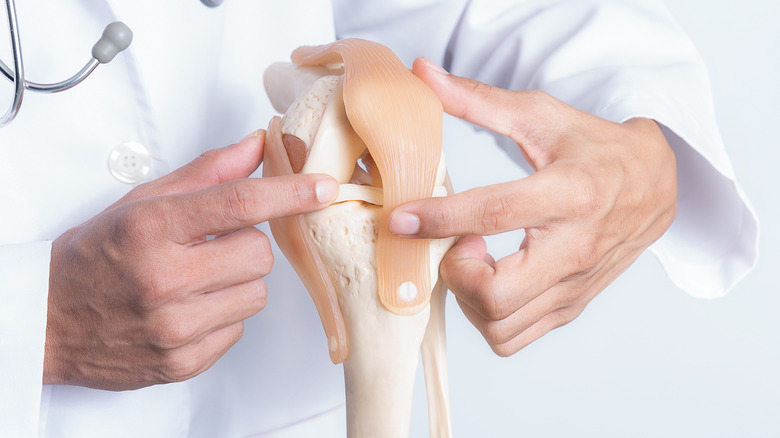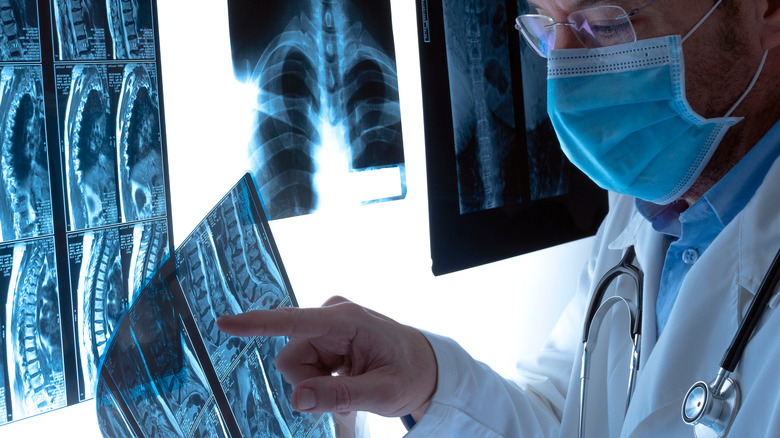What Is Osteomalacia?
If you ask someone to name a condition that affects bone health, their mind would probably jump to osteoporosis — and there's a pretty good reason for that. The International Osteoporosis Foundation (IOF) states that the condition affects one in three women and one in five men worldwide each year. Unfortunately, osteoporosis rates are rising as a result of lifestyle changes and the general aging of the global population.
There are many ways a person can reduce their osteoporosis risk. Certain physical activities, medications, and dietary changes are all options suggested by the IOF. Osteoporosis is not the only condition that can affect the quality of a person's bones, though. There's a condition that, unlike osteoporosis, can affect anyone of any age.
Osteomalacia is the medical term for the softening of the bones, usually due to a lack of calcium in the blood (via MedlinePlus). This condition is known as rickets when it appears in children. A 2009 review published in the medical journal Clinics states that it has some connection to osteoporosis. However, unlike osteoporosis, osteomalacia involves bones that don't harden, not bones that weaken (via WebMD).
A nutritional weak spot
According to the Mayo Clinic, the most common cause of osteomalacia worldwide is vitamin D deficiency. The National Center for Biotechnology Information elaborates, explaining that vitamin D deficiency is the most common nutritional deficiency in both children and adults. And when one looks at behaviors that increase the risk of reduced vitamin D levels, it is easy to see why. Some may assume that the lack of vitamin D in a person's diet is the only real factor here, but MedlinePlus lists several other strong contributors. Generally speaking, these risk factors are behaviors that limit a person's exposure to sunlight. People who live in low-sun climates, spend most of their time indoors, and cover most of their skin with clothing are all at a higher risk of developing a vitamin D deficiency.
Osteomalacia leads to bone softening, increasing the risk of fractures and breaks. These are often symptoms of the disease, in addition to muscle weakness (via the Cleveland Clinic). Children with rickets may also experience stunted or abnormal bone growth, as their bones are not receiving the proper minerals they need during key development phases (via the Mayo Clinic).
Doctors diagnose osteomalacia through bone density scans. Blood work can also confirm the presence of the disease. Once confirmed, osteomalacia treatment often involves increased vitamin D and calcium intake, as well as the use of braces or corrective surgery and increased exposure to sunlight (via the Cleveland Clinic).


